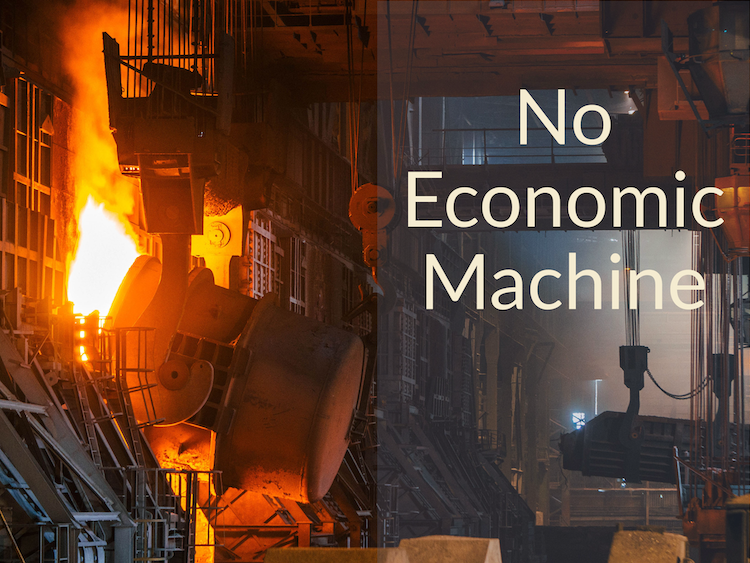How the drive for efficiency leads to greater wealth concentration and threatens capitalism. What can be done about it?

Topics covered include:
- Why income growth has slowed for the middle class
- Why the economy now follows a power-law distribution rather than a normal distribution, leading to skewed outcomes
- Why the economy is a complex adaptive system rather than a machine
- How the type of job you have and the company you work for affects your income
- Why greater efficiency increases the risk of catastrophic collapses
- What are ways to balance efficiency with resiliency
Show Notes
When More Is Not Better: Overcoming America’s Obsession with Economic Efficiency by Roger L. Martin
How The Economic Machine Works by Ray Dalio—Video
Episode Sponsors
Please take the Money For the Rest of Us Listener Survey
Related Content
179: Free Markets and the Great Famine
231: What Determines How Much You Make
359: Why Are There So Many Shortages?
408: Is Success Due to Hard Work, Talent, or Luck?
Transcript
Welcome to Money For the Rest of Us. This is a personal finance show on money, how it works, how to invest it, and how to live without worrying about it. I’m your host, David Stein. Today’s episode, 323, is titled “The economy is not a machine.”
The Non-Banked
Yesterday, LaPriel and I were at a CVS pharmacy, buying a gift card, and the gentleman before us in line added $61.05 to a prepaid Visa debit card. He added that amount because there was a $4,95 fee to add money to his card. Now, I hadn’t seen that before. And I looked. These prepaid Visa cards can cost up to $9.95 a month, and $5 or more to actually add money to the card. That is extremely expensive. Now, why would anybody do that?
Well, usually because they don’t have a bank. 7.1 million U.S. households, or about 5% of the total, don’t have a bank account in the U.S. It reminded me how different the interaction with the economy, the banking system, and money is for many individuals in the U.S. who are extremely poor.
In the recent U.S. consumer survey by the Federal Reserve—only one-third of lower-income families participated in the stock market, compared to 70% of upper-middle-income families, and more than 90% of families in the top decile of income. Less than 40% of families in the bottom half of the income distribution in the U.S. were in a retirement plan, compared to more than 80% for upper-middle-income families, and more than 90% for families in the top decile of income.
I thought about this a lot over the Thanksgiving break, as I was reading a book by Roger Martin. He was a professor of strategic management at the University of Toronto and has published 11 books. His most recent is titled When more is not better. Overcoming America’s obsession with economic efficiency. He shared some sobering data that he calculated based on U.S. census information.
Middle-Class Income Growth Is Slowing
From 1947 through 1976 the real median family income grew at 2.4% per year. So real, after adjusting for inflation, the median being the middle family. At that growth rate, the median family was twice as well off economically in 1976 as a family in 1947. But in the 42 years following the Bicentennial in the U.S, the median income only grew 0.6% per year. Meaning that that family wasn’t twice as well off, but only about 31% better off than they were the prior 42 years.
That median family—they’re not experiencing the same level of prosperity as those in the upper decile of income, or even the top 25th percentile.
There used to be a very tight relationship between the economy becoming more productive, more efficient, and wage growth. Now you’re not seeing that connection. In this episode, we’re gonna look at what has changed with regards to the economy that is leading to more concentration of income and wealth and is a threat to democracy.
In 2013 hedge fund manager Ray Dalio released a video titled “How the economic machine works.” He talked about different cycles, debt cycles. But this analogy of the economy being a machine is very old. The idea that the economy can be broken down into parts, and optimized, and then the parts put back together, and there’s some predictability to the economy because it’s just a machine that works very efficiently. And because it’s a machine, the way it’s supposed to work is that over time economic outcomes—income, wages—are normally distributed. This is called a Gaussian distribution, where you have a big bulge in the middle, the middle class. Fewer individuals are wealthy and fewer are poor, but over time, the distribution moves to the right, so everyone gets wealthier and participates in that growth—the poor, the middle class, the wealthy.
The median income grows for the middle family, and it grows as fast as the average income. But that’s not the situation today. Now the average income is growing faster than the median income and has been for several decades. Now, in this most recent survey by the Federal Reserve, it actually showed that the median for the prior three years through 2019 did grow faster than the average. But that was before the pandemic hit, and it’s a good thing. Because if the average is growing faster than the median, that means that higher-income households are getting a larger and larger percentage, and that has been the predominant pattern since 1980.
As a Money For the Rest of Us Plus member, you are able to listen to the podcast in an ad-free format and have access to the written transcript for each week’s episode. For listeners with hearing or other impairments that would like access to transcripts please send an email to jd@moneyfortherestofus.com Learn More About Plus Membership »
